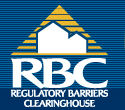|
Reports & Publications
Suffolk, Virginia: Affordable Housing Task Force Report
This report from the Affordable Housing Task Force for the City of Suffolk, Virginia describes in detail a number of suggestions for increasing the amount of affordable, workforce housing in the city. In the introduction, staff writes that rising housing costs are forcing those who work in the city to seek housing elsewhere. They also discuss state and local planning efforts to address these growing needs.
The authors define affordable housing as housing which costs no more than 30 percent of the average household's income. Section IV describes a number of factors that affect housing costs including: rising land costs; land availability; presence, or lack thereof, of high density zoning; presence, or lack thereof, of mixed use zoning; design standards; presence, or lack thereof, of local incentives; and negative perceptions of affordable housing.
The authors conclude that the city should make the provision of affordable workforce housing a priority. The authors list ten goals and several objectives for the local workforce housing program, including the use of local government regulatory incentives to minimize or remove institutional barriers to housing affordability. They also describe existing programs the city is using to promote housing affordability, including the adoption of an Affordable Dwelling Unit ordinance, which allows density bonuses for those who create affordable housing. However, they admit that the city has not used the ordinance to promote the development of affordable housing. They describe some of the shortcomings with the ordinance and make a number of recommendations for improvement.
They also list a number of policies the city has that impact housing, including housing construction standards, the Consolidated Plan, and the permitting process. They present a list of prioritized techniques. Short term priority actions include voluntary inclusionary zoning, fast track development review, city-initiated zoning for higher density housing, tandem houses, zero lot line zoning, accessory apartments and deregulation of building methods. Longer term techniques include development fee waivers or reimbursement, land purchase and resale, and infrastructure support. The report also contains a list of recommended implementation strategies. The appendices contain a list of questions from area homebuilders and answers from local government staff. Also included is a lengthy affordable housing tool kit that describes over twenty affordable housing activities, communities where those activities are being undertaken and the pros and cons of each activity.
http://www.tbaonline.org/builderservices/Affordable-Final-Plan-to-Council.pdf
 Reports & Publications Page Reports & Publications Page
|


